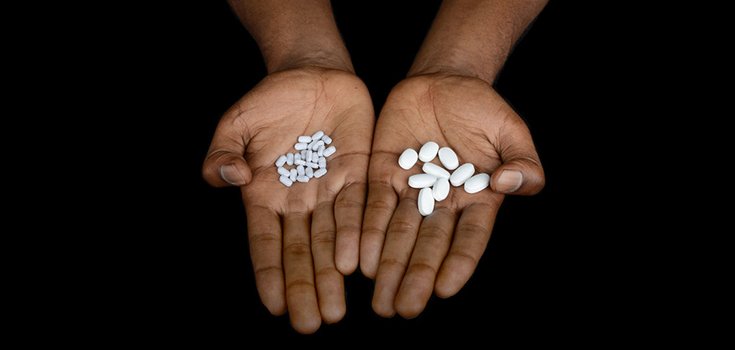The DEA Will Slash Opioid Production 25% in 2017

The U.S. Drug Enforcement Administration (DEA) announced on October 4th, 2016 that plans to reduce opioid manufacturing by 25% next year are underway, citing a shrinking market and the epidemic of abuse as primary reasons.
The official change, or Final Order, has been published in the Federal Register. And, as The Verge reports:
“The DEA reserves the right to change a quota based on reasons such as increased demand or new manufacturers entering the market.” [1]
Shrinking Demand, Shrinking Manufacture
From 1999 to 2014, sales of prescription opioids in the U.S. nearly quadrupled. Today, an estimated 20% of patients with non-cancer pain are prescribed the potent drugs. [1]
Since doctors are working to reduce the number of opioids they prescribe, the DEA is following suit by cutting down on the allowed quota.
Read: This NJ Hospital Will Do Anything to Avoid Prescribing Opioids
The DEA is making the move, even though pharmaceutical companies and advocacy groups spent $880 million on campaign contributions and lobbying initiatives from 2006 through 2015. That amount is 8 times what gun lobbyists spent, and 200 times more than advocates for stricter policies shelled out during the same time period.
The DEA sets a limit on the total amount of a drug that can be manufactured each year. Next year’s reduction in opioid medications will affect medications such as oxycodone, hydrocodone, morphine, hydromorphone, and fentanyl. [1]
Hydrocodone production will be cut by 34%.
In a press release, the DEA said:
“Earlier this year the CDC issued guidelines to practitioners recommending a reduction in prescribing opioid medication medications for chronic pain.
For years, DEA and others have been educating practitioners, pharmacists, manufacturers, and the public about the potential dangers of the misuse of opioid medications.” [1]
A Growing Crisis
Doctors wrote nearly 207 million prescriptions for narcotic painkillers in 2013 – a huge increase from about 76 million in 1991. This was in large part due to lobbying by the pharmaceutical industry and a PR campaign led by Purdue University to increase the use of the drugs. [3]
Purdue went on to plead guilty to misleading the public about the risk of addiction to the painkiller OxyContin, and paid a fine of $634.5 million.
CDC statistics show that more people died from drug overdoses in 2014 than in any year on record, and that opioids were involved in more than 6 out of 10 fatal overdoses. [1]
Sen. Richard Durbin of Illinois pointed out this past June that the DEA had approved enough opioid pills to be manufactured in 2014 “for every adult in America to have a bottle of pills.” [2]
Over the summer, a group of senators, including Durbin, called on the DEA to direct pharmaceutical companies to stem the supply of painkillers. Durbin wrote a letter to the administration, signed by a handful of his fellow lawmakers, which read:
“We urge the DEA to utilize its existing quota setting authority, to the fullest extent possible, to combat this epidemic.”
He went on to write:
“Fourteen billion opioid pills are now dispensed annually in the United States – enough for every adult American to have a bottle of pills.
Certainly, the pharmaceutical industry is at fault for decades of misleading information about their products and the medical community bears responsibility for its role in over-prescribing these dangerous and addictive drugs, but we remain deeply troubled by the sheer volume of opioids available – volumes that are approved by DEA.”
According to the 2015 National Survey on Drug Use and Health, upwards of 6.5 million Americans over age 12 have used opioids for non-medical use in the past month. Opioids are the second most popular drug after marijuana – and more popular than heroin, hallucinogens, and cocaine combined, in terms of use over the past month. [1]

However, reducing the amount of prescription opioids can cause other problems. For example, in 2011, Florida Gov. Rick Scott started cracking down on pain-management clinics that were suspected of dispensing too many opioids.
The good news from Scott’s decision is that prescription-drug overdoses fell within the first year. The bad news is that heroin deaths climbed 39%, as people who couldn’t get their prescription painkillers turned to the illegal drug.
Meanwhile, the DEA decided in August 2016 not to reschedule marijuana from a Schedule I substance to a Schedule II substance. That means marijuana remains in the same group as heroin, LSD, peyote, ecstasy, quaaludes, and bath salts. Rescheduling marijuana would have made it legal for medical use nationwide.
Interestingly, cannabis has shown promise in studies in treating addictions to hard drugs, including opioids.
Sources:
[1] The Verge
